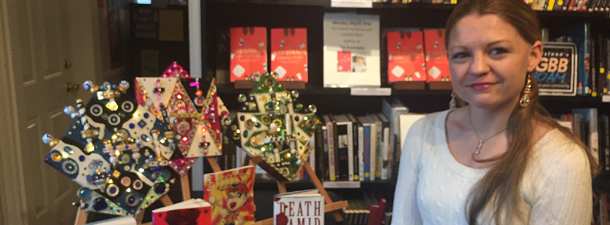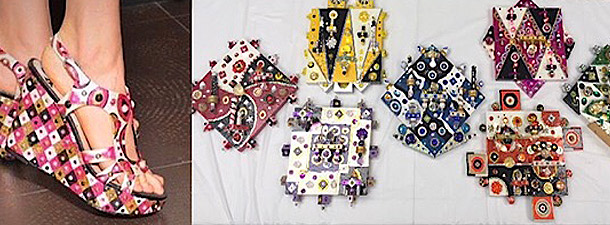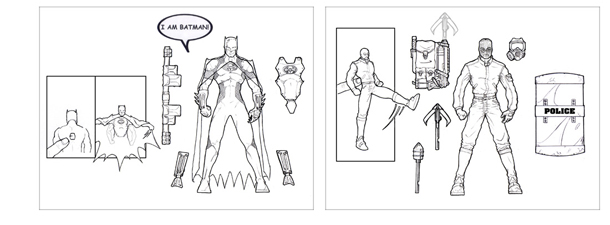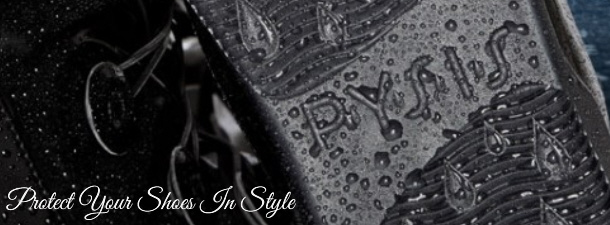MEC: Interview with designer Maria Elena Piña Fonti
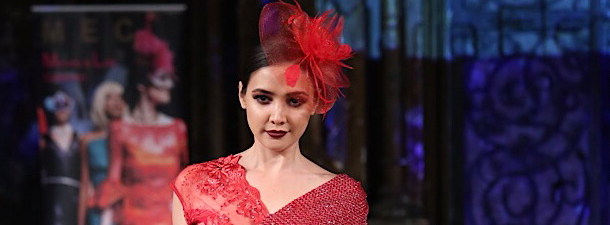
 Maria Elena Couture (MEC) is a company named after its founder. Established in 2015, MEC launched as a luxury handbag company that offers both fabric and leather products in an array of colors and unique and abstract style.
Maria Elena Couture (MEC) is a company named after its founder. Established in 2015, MEC launched as a luxury handbag company that offers both fabric and leather products in an array of colors and unique and abstract style.
In 2019, MEC created a new collection called “Mimmo & Lola” which contains designs that were exclusively developed for the MEC brand. Designer Maria Elena has an eye for beauty and a passion for apparel. Her creations have been showcased on fashion runways in New York City, Palm Beach, and Fort Lauderdale and are rapidly gaining unceasing attention from both the public and the media.
Maria Elena is personally involved with the construction of her M&L couture collections and MEC handbag designs. Each bag is given the name of an important woman either in history, the Cuban culture, or from Maria Elena’s life. MEC is a woman-owned company that creates items for women and empowers women to be the best they can be at any age. Intended to lift the spirits of those who see them, each bag is lovingly crafted and celebrate the vivacious liveliness of colors.
Maria Elena was formally educated in the sciences but her love for the arts was inherited from her mother, Maria Mercedes, who was a talented runway seamstress. Maria helped translate for her mother who spoke little English when she first moved to America. Helping her mother, Maria learned every aspect of the fashion industry—and this only increased her love for style and beauty.
Maria Elena Piña Fonti recently discussed her career and MEC via an exclusive interview.
Meagan Meehan (MM) of Entertainment Vine: You got interested in fashion from an early age when you worked alongside your seamstress mother, so how did she get into fashion?
Maria Elena Piña Fonti (MEPF): Like most of her contemporaries, my mother had formal lessons in sewing but never really used them in Cuba. Unbeknownst to her at the time, these lessons positioned her in a good place in her new life in New York. Once she felt my brother and I could handle the walk from school, she started her work in the fashion world as a means of helping my father with family expenses. She, like many (with no dominant language knowledge), started with piece work.The monies payed per piece work (such as two cents per sleeve or collar) was a horrible unethical practice, but that’s another conversation. My mother managed to quickly move to a fashion studio that produced samples for runway styles, so her working conditions improved tremendously. At that time, she would work on bringing the designer’s sketches to life. She had an amazing eye for fashion. Had the financial situation here in New York mirrored her living conditions in Cuba, I am sure she quickly would have had her own successful collection.
 MM: What kinds of fashions did your mother work on most?
MM: What kinds of fashions did your mother work on most?
MEPF: My mother’s work varied depending on the styles that were brought to the company, which varied from gowns, to at the time, looks such as Versace and those worn by Twiggy during that era. She slowly developed a group of clients, mostly models and interior designers, for whom she did projects. At those times, I would accompany her to visit these clients and would serve as her spokesperson and voice due to her limited English language. It was during these times when my mother and I would design some of my clothing (she basically made my outfits for a good portion of my life). That is when I slowly fell in love with the fashion industry.
MM: How does your Cuban heritage impact your sense of style?
MEPF: I grew up with the concept that the feminine and elegant look, together with the concept of color, was essential in the fashion experience, no matter the age. From the time I was a young girl, I was taught to coordinate the outfit from the hat to the bag to shoes or even just the must-have bow in the hair. I was taught at an early age to be myself and wear what I felt was me, and not follow the trend just because it’s a trend.
We, as a culture are a vibrant, happy and very musically melodic people, irrespective of where we live. So as such, I believe that the inclusion of emotion via color and fabric fluidity are imperative in my couture and handbag collections. My parents always kept us in touch with our culture via stories or events we attended. I observed and pull on my memories of these events in addition to my interaction with family members, aunts, cousins, and family friends, and my recollection of the colors and details of their outfits – ruffles, prints, color coordination. She always included vibrant colors whether bags, gloves hats or shoes. I use these memories and translate them into my designs whether the couture or the handbag collection. I must also add that my American culture of my time was also filled with colors and combinations, which defined the era I grew up in. These lived experiences are part of my persona and hence mirrored in my collections. So that my collections “combine the traditional with the contemporary to create the unique.”
MM: How did you break into your fashion industry and why did you focus so much on handbags?
MEPF: As I previously shared in my biography, my formal education was in the sciences and education disciplines. However, my love of fashion was something I always dreamt of bringing to life in a much bigger way than my personal look. One day, on introspection, I decided that this to was part of who I was as well and I wanted my dream to come to reality. I’m not really sure where all of it will take me. I take inspiration from Carolina Herrera who did not have a formal education in the fashion industry yet brought to life designs of elegance and femininity to her collections to such a degree that even a simple woman’s shirt is a head turning statement of sheer elegance.
First, I researched how to establish a business (I thought this would be most difficult), followed by manufacturers that could bring to a concrete level the designs; and how to bring this out there to share my creations. I began with the bags in that I feel that handbags are the spirit of the woman that carries it on that day. That is to say that a person selects the handbag for the day or week based on their emotional thermostat. Essentially, you wear your emotions on your arm or shoulder via either the color, size or style. So, I set out to put all these pieces and so many more into action. With the help of some friends in the media/ photography industry, website and designs were concretely given birth. I felt that starting with fabric bags I would have more versatility and as such the fabric bags were created. I was drawn to the handbags, in that I believe handbags are very monotonous these days. That is the look is almost uniformed in nature. Yet more than ever the person carrying it are more versatile than ever.
MM: Your styles are so unique, so what inspires their design and how do you select the colors?
 MEPF: As you will note, my handbags are all named with a feminine name. They are presently christened with the names of women in my family or influential women in the Cuban culture soon to be expanded to women in history. So therefore, the first fabric bag is named “Mercedes” after my mom. My inspiration of the name is then translated into the contribution of the person and the related colors or shapes that come to mind based on their history such as the “Gloria” bag after Gloria Estefan(the bag is my creative expression of the bongos which are an integral part of her music) or the “Dulce” bag after Dulce María Loynaz, poetess and daughter of the author of the march theme Himno Invasor. The colors are a combination of the mental images that come to mind with her poems the Cuban and American flag colors and vibrant colors of the endemic Cuban national bird the Trogon which oddly all seem to interrelate. So, to answer your question simply, the inspirations come from the environment of my past (memories) and present and perhaps the thoughts of my future and its surroundings. Ingrained in all of them is the melodic expression of colors and their deep relationship to the psyche of the person and to the soma, that is the body.
MEPF: As you will note, my handbags are all named with a feminine name. They are presently christened with the names of women in my family or influential women in the Cuban culture soon to be expanded to women in history. So therefore, the first fabric bag is named “Mercedes” after my mom. My inspiration of the name is then translated into the contribution of the person and the related colors or shapes that come to mind based on their history such as the “Gloria” bag after Gloria Estefan(the bag is my creative expression of the bongos which are an integral part of her music) or the “Dulce” bag after Dulce María Loynaz, poetess and daughter of the author of the march theme Himno Invasor. The colors are a combination of the mental images that come to mind with her poems the Cuban and American flag colors and vibrant colors of the endemic Cuban national bird the Trogon which oddly all seem to interrelate. So, to answer your question simply, the inspirations come from the environment of my past (memories) and present and perhaps the thoughts of my future and its surroundings. Ingrained in all of them is the melodic expression of colors and their deep relationship to the psyche of the person and to the soma, that is the body.
MM: Aside from handbags, what kind of clothes and accessories do you hope to start producing soon?
MEPF: At this time, we formally showcased the company couture collection “Mimmo & Lola,” which will soon be available on Maria Elena Couture’s (MEC) website as a couture exclusive. These are unique designs that debuted and walked at NYFW in September 2018; Art HeartsFashion in NYC. I would like to continue this couture line, “Mimmo & Lola,” along with the handbag line. At this time, these two projects creatively are very satisfying. As to the future, we will see what it brings.
MM: How did you get into fashion shows and what is it like to see your fashions on runways?
MEPF: My first fashion show opportunity I owe to Andres Aquino, who based on my media/photographer contact at the time, put me in contact with him. After reviewing my handbags, Andres agreed with the inclusion of my MEC handbag collection at his Couture Fashion Week New York show in September 2017. At that time, the MEC was exclusively a handbag company, so I needed to quickly decide what the models would be wearing on the runway. Andres offered to design something for them to wear. I was very appreciative, yet I very much wanted this first show to be about my exclusive creations.
I quickly decided that I would incorporate a couture style which I think is an essential piece and dare I say timeless piece, the jumpsuit. So, I quickly designed varied jumpsuit styles in three basic colors and walked them on the runways with my handbags. However, I did not announce these as my exclusive designs in that my goal was to showcase the handbags. This event, of course, along with my husbands’ suggestion to continue walking my designs and support awakened my desire that walking both was a real possibility. Although subsequent walks during fashion week runway shows in NYC, walked both the couture and handbags, I did not formally debut Mimmo & Lolauntil this past year, 2018.
Seeing the couture creations and handbag collection on the runway is an absolutely frenetic experience. The process of pencil to paper, sketch transformed concretely to the model walking and representing your company, and creation is absolutely a heart-stopping addictive process you want to repeat before the present collection is even finished walking on the runway. It is a beautiful experience in which you are able to share your creative persona with your audience amazing!
MM: What about the Art Hearts Fashion show most appeals to you?
 MEPF: There are several points that appeal to me regarding the Art Hearts Fashion Show. However, I believe that the number one point is that Art Hearts Fashion truly puts out your brand and designer name to the public via different media modalities from their exposure of your show via the fabulous professional photographs to the page dedicated to your brand and designer name with the ability to continue to add to your profile throughout the year. They are quite supportive of the designer in this matter
MEPF: There are several points that appeal to me regarding the Art Hearts Fashion Show. However, I believe that the number one point is that Art Hearts Fashion truly puts out your brand and designer name to the public via different media modalities from their exposure of your show via the fabulous professional photographs to the page dedicated to your brand and designer name with the ability to continue to add to your profile throughout the year. They are quite supportive of the designer in this matter
MM: How do you hope to see MEC evolve over the next five years?
MEPF: 2024, I hope will be a year where the MEC brand is thriving nationally with the unique creative designs growing and representing that “unique combination of the contemporary and the traditional to create the unique. By 2024, I trust the brand has expanded into the male fashion. By then, I would love to have the MEC brand expand into the international sphere. I believe in the brand and the MEC product and trust this is an achievable goal with God’s grace.
MM: Is there anything else that you would like to mention?
MEPF: I would like to add that the models involved in the whole concept of fashion is central to the conversation. Many times, I have noticed that they are often dehumanized and viewed as just a prop. I believe that the professional, strong, and beautiful models that have walked and/or have been photographed with my creations are central to the message, MEC and the Mimmo & Lola collection, that I want to bring to life. Their presence, spirit, strength, and connection to the creative piece and professional demeanor bring to life the energy and story of the birth of the couture and handbag collection. A big thank you to all the models that have presented the brand with such grace and cachet.
* * * * *
To learn more, visit Maria Elena’s official website. She can also be followed on Facebook and Instagram via @mariaelenacoutureny and on Twitter via @MECoutureNYC
